
My Review
Anyone who has come anywhere near the world of the illustrious Sherlock Holmes knows that, especially for his many admirers, it is a world both deep and wide: deep, because of the riches that may be uncovered by paying close attention, digging beneath the surface of the Canon (the 56 stories and 4 novels penned by Sir Arthur Conan Doyle–with the help of Dr. John Watson); and wide, because of the breadth of Holmes’s active career, which has stretched from his home base in 221B Baker Street to the mountains of Tibet, and has created enormous, unflagging interest, worldwide, from the 1890s to the present. If anything, the fascination with Holmes has grown over the years. The places and situations where his services as consulting detective are needed have multiplied beyond counting in the industry of creative pastiches. To paraphrase Shakespeare (something Holmes himself did on occasion*), “Banish Sherlock Holmes, and banish all the world.”**
I cannot think of two more ardent or astute admirers of Holmes and his world than Leah Guinn and Jaime N. Mahoney, who are known for their impeccable research and attention to craft, not to mention their wit and warmth, at their blogs, The Well-Read Sherlockian (Guinn) and Better Holmes & Gardens (Mahoney). In their remarkable Sherlockian book of days, A Curious Collection of Dates, they have delivered something notable to read about for each day of the year. In fact, their knowledge is itself so deep and so wide that many times they provide two, three, four, or even more events (March 24 has six!) that fall on a particular date. One need go no farther than January 1 to discover: “that fateful meeting” of Holmes and Watson, recorded in “A Study in Scarlet” [STUD]; the founding of the paper that would become the Times of London, so essential to Holmes in his work; and the premiere of “A Scandal in Belgravia,” to open Season 2 of the BBC’s popular series, Sherlock, starring Benedict Cumberbatch and Martin Freeman as the inseparable colleagues in detection. This last entry signals that one need not blow the dust off this very engaging collection–while its display of learning among the Victorians is breathtaking, A Curious Collection of Dates brings the noteworthy Holmesian people, facts, and events right up to the present.
I heartily recommend exploring this fascinating book for yourself, but I cannot resist sharing a selection of some of the types of entries you will find when you do.
As befitting a book of days, there are many birthdays. These include actors who have played key characters in the adaptations of the stories, for stage, film, radio, and television. You can be sure to discover the birthdays of Jeremy Brett (November 3); Basil Rathbone (June 13), who shares a birthday with mystery writer and devoted Sherlockian Dorothy Sayers; and Benedict Cumberbatch (July 19), who shares a birthday with Russian actor Vasily Livanov, whose portrayal of Holmes in Russian productions earned him the Order of the British Empire in 2006 and a statue near the British embassy in Moscow (we learn all this from his entry). The legion of actors taking on the character of Holmes makes for numerous enlightening instances during the year. For example, of Peter Cushing (b. May 26, 1933), we learn:
Peter Cushing once famously proclaimed that “…he would rather sweep Paddington station for a living than go through the experience [of being Sherlock Holmes] again.” More than anyone, Cushing had certainly had enough turns at the characters to know whereof he spoke. Starring as the Great Detective on three separate occasions, Cushing appeared in the 1959 adaptation of The Hound of the Baskervilles by Hammer Films, the BBC’s 1968 Sherlock Holmes series, and in 1984, the made-for-television movie Sherlock Holmes and the Masks of Death.
Cushing was not always so antagonistic towards the Great Detective, and had been, in fact, a fan of Sherlock Holmes since his childhood: “I love all the stories. It’s the atmosphere I love so much, and they’ve all got that. I love the way they start: it is always foggy and there were those equinoctial gales.”
I love the way the entries are seasoned with personal quotes such as these, revealing so much about the personalities involved. One can also enjoy the host of photographs and period illustrations that enhance the text. It is especially helpful to see the photos of the variety of actors who have remade themselves, for a time, into a living image of Holmes.
Of course, acting is only one occupation held by people relevant to the Holmesian canon. Besides such indispensable figures as Sir Arthur Conan Doyle, and many other writers, one finds the collector Richard Lancelyn Green; the naturalist Charles Darwin; the astronomer Nicolaus Copernicus; the scientist, Sir Francis Galton; the American detective, Charles Pinkerton; the inventor of one style of shorthand, Sir Isaac Pitman; the magician, Harry Houdini; the violin virtuoso and composer, Pablo de Sarasate; the engineer and architect, Isambard Kingdom Brunel; the psychiatrist, Sigmund Freud; and many, many more–all with their connection to the world of Sherlock Holmes explained and documented in compelling fashion.
Many of the people profiled would be classed by some as “fictional” (I use this term cautiously). For example, we find birthdays for Mary Russell (January 2, 1900; wife of Holmes in his retirement, as reported by Laurie R. King, her literary agent), Mycroft Holmes (February 12, 1847; elder brother), and of course, Sherlock Holmes himself, whose actual birthday is believed to be January 6, 1854.
Anniversaries, such as the first publication of particular stories and the premieres of adaptations, are another kind of birthday. The book includes helpful appendices for the publication of the stories in The Strand or in Collier’s. Many entries make excellent use of such anniversaries to offer insightful commentary.
Historical events, such as the Queen’s (i.e., Victoria’s) Diamond Jubilee (June 22), the Battle of Marengo (June 14, 1800), and the Indian Mutiny (May 10, 1857), merit inclusion because of story references, but probably the most intriguing historical entries are those that date events originating within the story world. Some of these are given in Watson’s own account, as in “The Scandal of Bohemia” where Watson chances to meet the King of Bohemia who is consulting Holmes about a very delicate personal matter; the date given is “the twentieth of March, 1888” but it is pointed out by the authors that this apparently straightforward date poses some chronology conumdrums for careful observers of the canon. In other cases, Watson may give indications of the timing without a precise date, or include very little information to fix a date. Then it is the happy task of intrepid scholars to reason from the evidence to deduce the correct date, usually with much debate ensuing. Entries such as “‘The Adventure of Wisteria Lodge’ Begins” (March 24) and “‘The Adventure of the Three Gables’ Begins” (May 26) show the results of such scholarly efforts and the chief arguments backing them up. Some events originating in the story world–I’m thinking of Holmes’s plunge over the Reichenbach Falls on May 4, 1891–were so profoundly significant that they spurred an outcry in the world at large, and led to his return to both the story world and the waiting reading public.
I could easily cite a further torrent of examples. In fact, the more I attempted to list and classify the entries in this book, the more I realized that they defy any simple classification–they seem to share Holmes’s “infinite variety.” A Curious Collection of Dates gathers informative and entertaining accounts, in one place, that touch on formative events and influential people for Sir Arthur Conan Doyle, for Sherlock Holmes, or for both of them. It also pays tribute to famous Sherlockians such as William Gillette, Christopher Morley, William S. Baring-Gould, and Vincent Starrett. Above all, it records milestones in the life of Sherlock Holmes, a towering figure who continues to draw us from our world into his.***
♦♦♦♦
My Interview with
Leah Guinn and Jaime N. Mahoney
I am delighted to welcome Leah Guinn and Jaime N. Mahoney, who have kindly agreed to disclose some of their methods and reflect on a life led with Sherlock Holmes never far from view.
Q1. When did you first encounter Sherlock Holmes? Can you recall the first story you read? When did the urge to become a student of all things Holmes first take hold?
Leah: Because Sherlock Holmes has become so ubiquitous, I’m not sure that I was ever completely unaware of him. But we “met” a few times before things “took.” In 2nd grade, for instance, I bought Eve Titus’ Basil and the Pygmy Cats at the book fair. I loved it, but basically I was more about the talking mice. Later, in 4th grade (again at a book fair), I bought a collection of Sherlock Holmes stories. The very first one was The Sign of Four, and I was absolutely shocked at the fact that Sherlock Holmes took cocaine! Obviously this was not a book or a hero for me! I put it away and didn’t bother with Holmes again until sometime in college, where I tried The Hound of the Baskervilles. Again, I was disappointed, because there was (I thought) far too much Watson and not enough Holmes—which is why I don’t recommend it for one’s first Holmes story.
Finally…I had just come off a major reading binge—Preston and Child’s Pendergast series, and was absolutely lost. I read online that their hero, Agent Pendergast, was inspired, in part, by Sherlock Holmes, so I thought I’d give him (yet another) try. I first read two pastiches—Edward Hanna’s The Whitechapel Horror, then Lyndsay Faye’s Dust and Shadow. I then moved on to the Canon itself and it was all over. I don’t think I read anything non-Holmesian for the entirety of 2011.
Jaime: The first time I ever encountered Sherlock Holmes was through a pastiche, even though I wasn’t familiar with the term at the time. When I was twelve-years-old, my mother gave me a copy of The Canary Trainer by Nicholas Meyer because I had developed an interest in opera and singing, and I think she was hoping I would develop an interest in something… not so loud. My singing voice has always been a bit… shrill. She had The Canary Trainer on her shelf because she was writing a novel about King Arthur, and her writing group had suggested Meyer as an author who had successfully captured an iconic figure. I certainly think they were right.
As for the first canonical story I read – is it terrible that I don’t remember? Deduction tells me that it was probably either A Study in Scarlet or – ironically, to those who know me best – “A Scandal in Bohemia,” simply because those stories tend to come first in collections and I was a somewhat orderly child. I think I’ve wanted to be a student of all things Holmes since I first read The Canary Trainer (if you aren’t familiar with the Canon, it’s a pretty confusing book and I spent a lot of time in the library looking things up when I was done with it), but it was around 2009 that I first realized that there were other people like me. People who wrote things, and analyzed, and researched, and devoted their time to this very specific topic – it was a tremendous relief!
Q2. If you are willing to reveal your methods, I am very interested in your process. With such a wealth of possible material, how did you select the types of events you wanted to include?
Leah: We decided that we would each play to our strengths. I am a history person. In the end, I want to know “what really happened.” Jaime is much more literary, and far better at understanding the artistry in film and other media. We put everything we could think of on a spreadsheet, and went from there, trimming as we went—and as time grew short!
Jaime: At first, we weren’t very particular at all. Everything was going to get included (we thought, naively)! Every birthday, death, the original premiere date of every movie and television episode, every historical figure and significant event, every canonical moment. We soon realized that if we did that, the book would be unending. It would never be finished. Eventually we decided to just be consistent: every birthday was included, but only the deaths of significant figures. We included the premiere of every movie, but only the pilot episodes of television shows. Even then, some dates were overwhelmed with material (there is so much going on in May, it borders on ridiculous) and still had empty spots in others.
I can honestly say we clashed over very little, except for Louise Brealey (the actress who plays Molly Hooper in the BBC series). Leah was adamant that she be included, and I was equally adamant that she shouldn’t be. Molly Hooper isn’t canon, I argued! Not because I didn’t like Molly Hooper (I do, very much), but because I saw the door opening on writing a bunch of entries for other non-canonical characters. Suddenly I was metaphorically standing on top of St. Bart’s screaming that the book was never going to get done. I forget how we compromised on this one, but Ms. Brealey is in the book (March 27).
Q3. As you began mapping out events and dates, how did you go about filling gaps? How did you do research for specific dates, since, apart from birthdays, dates are not always that readily available?
Leah: We started out with the [William S.] Baring-Gould chronology. Even though it has some issues, it’s the one most people are familiar with, and it’s also very easy to find online. I would then back that up with Zeisler (whom I often like better), or use Dakin’s A Sherlock Holmes Commentary, in which he plays referee between chronologists. Another good source for that is Brad Keefauver’s online “Sherlock Holmes Timeline,” where you can see what the major players think in one place.
After that, I went through [Leslie S.] Klinger’s Annotated, page by page, to make a list of Canon events, historical events, people, works of art, places, crimes, actors, etc. Some of them had dates already—the Battle of Maiwand, for example. Others took some more digging. My favorite resources were online newspaper archives, the Oxford Dictionary of National Biography, and Ancestry.com. You would not believe what you can get out of Ancestry if you think creatively and are willing to do hours of sorting. Towards the very end, we still had some dates without entries, and for those I turned to Chris Redmond, who was able to very quickly find Sherlockian connections for each one. When you do work like this, you should never think that you are all-sufficient. Sometimes you need fresh eyes, and fresh minds, and the Sherlockian community is full of people who are willing and eager to offer both.
Jaime: Hope, prayer and Leah’s exceptional research skills. When we finished our initial calendar, I remember there being only a small handful of dates that had nothing to mark them. In some ways, those dates became very easy to fill, as they were a very specific and narrow target. We were able to think in terms of just that date, instead of mapping out a specific group of material (actors or premiere dates, for example) in its entirety. Sometimes we had to think outside the Sherlockian box for material (events that weren’t necessarily tied directly to Sherlock Holmes, but had interesting links instead).
In the end, I’d say there is still one date in the entire book where the entry is only somewhat tenuously Sherlockian. It was a tough date (but I won’t say which one, in case you haven’t spotted it). [I haven’t!~LPG]
Q4. Can you talk about some of your favorite discoveries? Some a-ha moments that might have sent Holmes leaping over his couch or waking up Watson in the middle of the night?
Leah: My very favorites were dates that took a good deal of detective work. For example, I found Herbert Greenhough Smith’s birthday on Ancestry, in an online record of Cambridge alumni. Another was Daniel Rudge, one of the inventors of the Rudge-Whitworth bicycle which left those famous tire tracks in “The Adventure of the Priory School.” He was very elusive, but I finally managed to track him down, and obtain his vital records via mail.
Jaime: Ah, waking Watson up in the middle of the night – there’s a fine Sherlockian tradition! I’m not sure this revelation is worth waking up someone in the middle of the night (I rarely think things are – like Watson, I treasure my sleep), but I was astounded at how often Sherlockian actors crossover, and how their lives overlap. There are Watsons who have played the character two, three, four times or more – to different actors playing the Great Detective! Or an actor would play Holmes in one series and Watson (or Moriarty) in another.
Most of all, I enjoyed learning how the actors’ personal lives would intersect. Not just that Jeremy Brett and Edward Hardwicke were friends off-screen, but that Jeremy Brett and Robert Stephens knew each other before they had even heard of Sherlock Holmes. Or that Brett’s former brother-in-law, Daniel Massey, appeared in Granada’s adaptation of “The Problem of Thor Bridge.” Or that his former father-in-law, Raymond Massey, also once played Sherlock Holmes.
I think a lot about Jeremy Brett, obviously.
Q5. I know that Leah marks the year’s end with her annual Twelfth Night Giveaway, and I suspect that, like me, Jaime does not let November 3 go by without a grateful nod to the memory of Jeremy Brett. Are there other dates that you personally celebrate, as devoted Sherlockians?
Leah: I love doing this, because it gives me a chance to share Holmes with my kids. We celebrate Holmes’ birthday, “Reichenbach Day,” Conan Doyle’s Birthday, and “Watson’s Birthday,” always with cake, and sometimes with action figures and movies.
Jaime: The Master’s birthday – January 6 – of course! The perfect occasion to raise a glass to Sherlock Holmes, for all he has done and for all those whom he has saved. My non-Sherlockian friends are baffled that I take the time to celebrate Holmes’s birthday. They want to know if I celebrate the birthdays of Harry Potter, Bilbo Baggins, or Hamlet. I tell them, “Of course not. They weren’t real.”
Of course, in addition to Jeremy Brett’s birthday, we included the day of his death [September 12, 1995] in the book. I adore Jeremy Brett, and this was a particularly difficult entry to write. When it was done, I remember I told Leah, “You’d be proud of me. I only cried a little bit.”
Q6. Given the immortal partnership of Holmes and Watson, it seems wonderful that you chose to write this book as a team. As friends and colleagues, could you each say a few words about what the other brought to the project? Any stories you would like to share?
Leah: Not only did Jaime bring her superior literary and media skills, she also brought a sense of balance and proportion to the whole thing. I don’t know how to stop, pretty much. Without Jaime, the entries would be longer, there would be about one hundred more of them, and the book might not be done! Plus, Jaime is such a wonderful person and so great to talk to. I think that working on (and occasionally suffering through) this book cemented our friendship.
Jaime: If I had walked into a shop and asked for a co-author custom built to my specifications, I still wouldn’t have received a better co-author than Leah. She is a tireless researcher, a gifted writer, and really just one of my very best friends. I was always astounded when she would look at a topic and see a 3,000 word essay, where I had only seen a 150 word entry. She has a way of cutting right to the heart of things, which I’ll never be able to do in all my days.
About a month after Wessex Press accepted our book for publication, I found out I was pregnant with my daughter. I was worried about telling Leah. I thought for sure that she would be annoyed, worried about the future of the book, and concerned about working with a pregnant co-author. I shouldn’t have been concerned. Outside of my husband and me, Leah was probably the most excited for Morrigan’s arrival. This story shouldn’t surprise anyone who knows her, but I’ll always remember how grateful I was to her.
My deepest thanks to Leah and Jaime for their marvelous responses to my questions. Their joy in the subject of Sherlock Holmes, in all its myriad facets, is only matched by their very evident dedication to careful research and thoughtful writing. They have given us a sublime book of days to stimulate the mind and imagination throughout the year. Such excellence of craft can touch the heart as well, something expressed so movingly in the closing scene of “The Adventure of the Six Napoleons.” Inspired by the words of Inspector Lestrade, I would like to say thank you to these authors–there is not a Sherlockian among us, from the oldest to the youngest, who wouldn’t be glad to shake you both by the hand.
♦♦♦♦
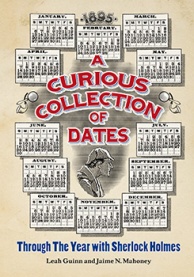
Buy the Book
The Well-Read Sherlockian ♦ Leah on Twitter ♦ Leah on Facebook
Better Holmes & Gardens ♦ Jaime on Twitter ♦ Jaime on Facebook
♦♦♦♦
Giveaway!
I am very pleased to offer 2 paperback copies of A Curious Collection of Dates: Through the Year with Sherlock Holmes which will go to two lucky winners of the giveaway linked below. The winners will be chosen at random from the total entries. Follow the instructions to increase your number of entries. The giveaway will be open for about one week and will end at 11:59 pm on Sunday, January 22, 2017. Open to residents of the U.S., Canada, and the U.K., 18 years of age and older.
I will notify the winners by email. If you are chosen as a winner, please reply with your physical mailing address within 48 hours. If I can’t reach you by email, the prize will go to another entrant.
Good luck, and thank you for participating!
*Following the lead of author Leah Guinn’s practice at The Well-Read Sherlockian, I shall provide footnotes. In “The Adventure of the Empty House” [EMPT], Holmes paraphrased a line from Antony and Cleopatra (“Age cannot wither her, nor custom stale / Her infinite variety,” Act II, scene 2) when he said, “I trust that age doth not wither nor custom stale my infinite variety.” Scott Monty (I Hear of Sherlock Everywhere) chose this quote to title his birthday post in 2008, and Jaime N. Mahoney used it to delightful effect, while musing on EMPT and the difficulty of Holmes’ return, to cap off her own return from hiatus in January 2015 .
**See Henry IV, Part 1, Act II, scene 4: “Banish plump Jack, and banish all the world.”
***In The Fictional 100, I emphasized how fluidly Sherlock Holmes has migrated beyond the page to engage with us in our everyday world. This book reminds me that it is a two-way street: that he continually calls on us to pay him a visit and immerse ourselves in his world, the way he saw it. Sherlock Holmes ranks 9th on the Fictional 100.
Tags: Book of Days, Book Reviews, Fictional 100, Fictional Characters, Jaime N Mahoney, Leah Guinn, Sherlock Holmes, Sherlockians, Sir Arthur Conan Doyle
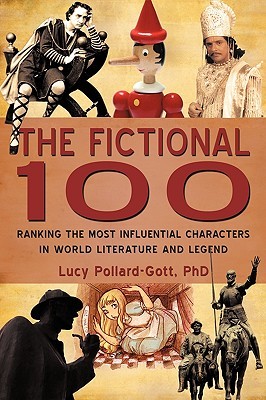
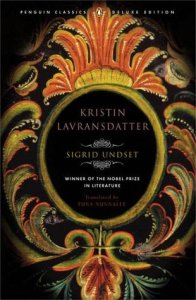
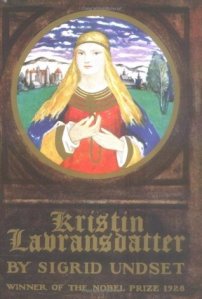







 Kathleen C. Perrin
Kathleen C. Perrin


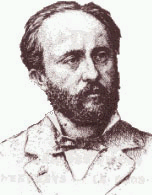


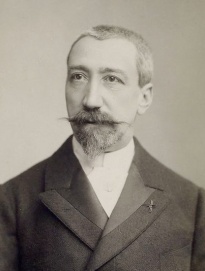


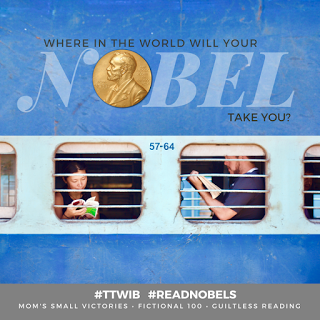




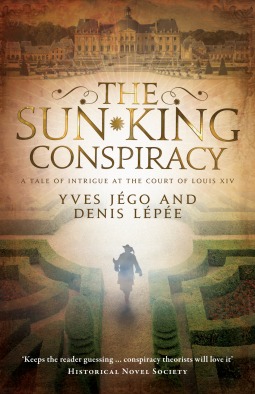
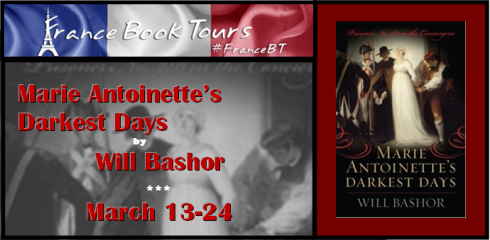

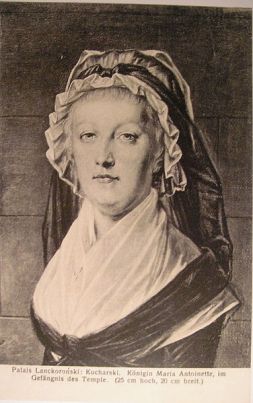

 Will Bashor
Will Bashor


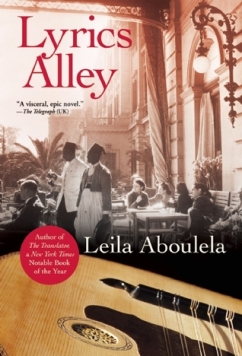
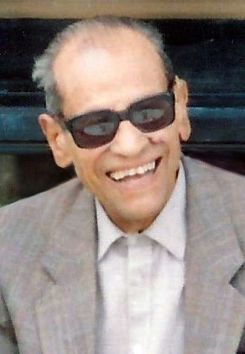







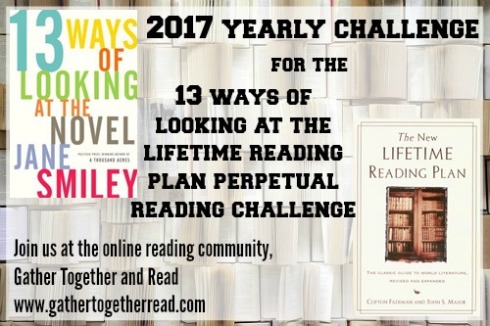






















Recent Comments